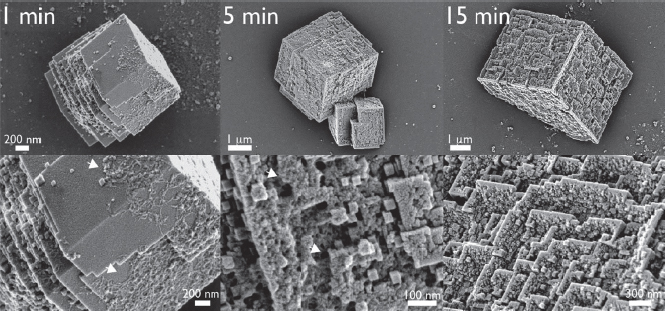
Nanocalcite is a carbonate mineral and the most stable polymorph of calcium carbonate (CaCO3). Nanocalcite crystals are trigonal-rhombohedral. Nanocalcite is transparent to opaque and may occasionally show phosphorescence or fluorescence. The nature, shape and dispersion characteristics of the nanocalcite particles effect the mechanical and other properties of the polymers.
The calcium, carbon and oxygen atoms can arrange themselves in three different ways, to form three different calcium carbonate minerals. The most common arrangement is the hexagonal form known as calcite. A number of different nanocalcite crystal forms are possible: scalenohedral, rhombohedral and prismatic.
The advantages of using nanocalcite are that, they can improve the air-tightness, opacity, resistivity and stiffness, and provide good stability, and good electricity insulation. Therefore, use of nanocalcite is important in composite materials. Nanocalcite has been used extensively as filling material in various industries in order to improve some mechanical properties of the composite materials and to reduce the product costs.
The carbonization method is the most appropriate method for nanocalcite production and it is widely used commercially. Because of the availability of raw materials and their low costs, carbonation method for producing nanocalcite has advantages for large scale. The main chemicals used in nanocalcite production in large scale studies were Ca(OH)2 powders and CO2 gas.
Advanced applications of nanocaltite essentially involve the synthesis of stable, homogeneous, and nano sized particles to be used as filler material in polyester films for magnetic types’ productions, builder for detergent productions, coating pigment in the production of paper and cosmetic industries.
Microbiologically precipitated calcite has a wide range of applications, such as soil remediation, soil stabilization and concrete repair.
- Nanocalcite is used in magnetic types’ production.
- Nanocalcite is used in detergent production.
- Nanocalcite is used in cosmetics industry.
- Nanocalcite is used in paper production.
- Nanocalcite is used for soil remediation and stabilization.
- Nanocalcite is used for concrete repair.
Comments
Post a Comment